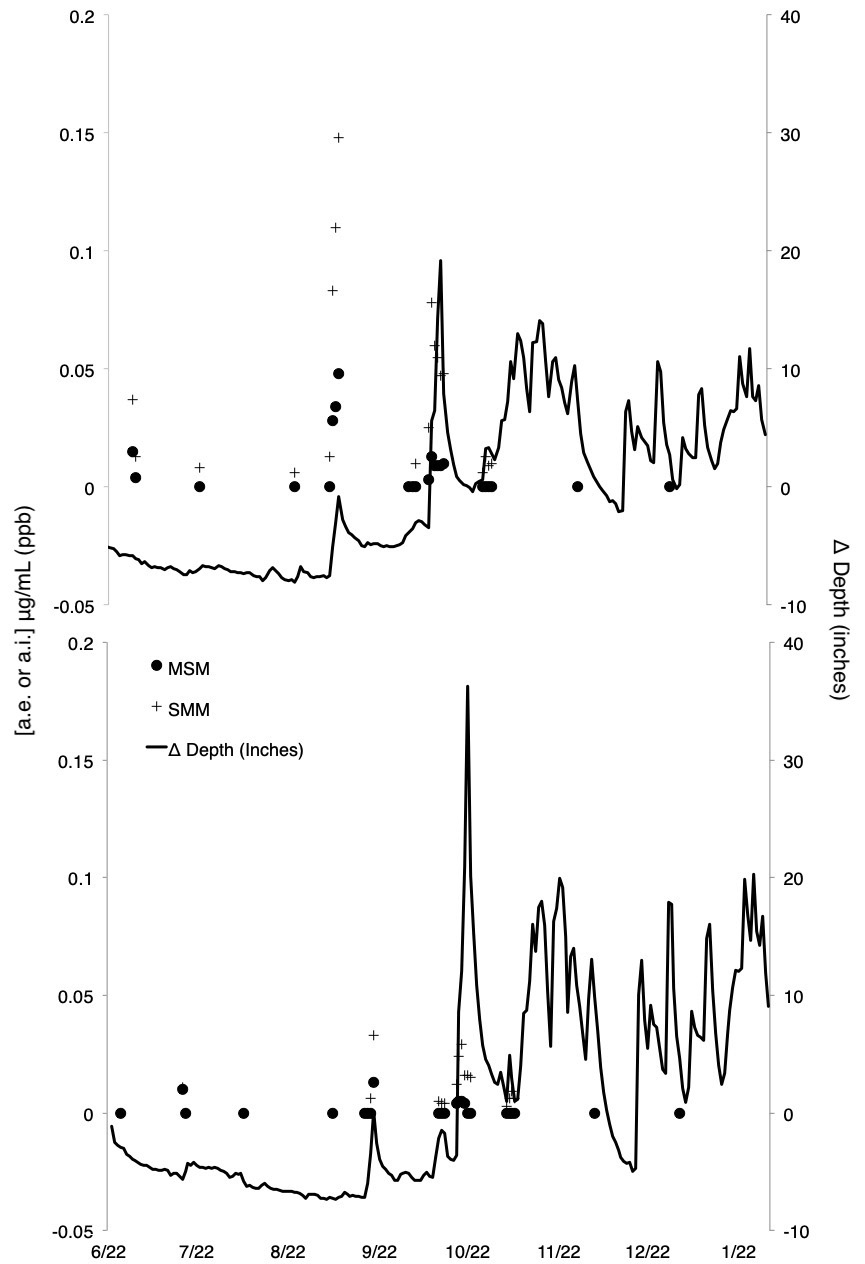Surface water monitoring
Nontarget impacts of routine aerial silvicultural practices on surface water quality are not well documented. Thus, uncertainty remains regarding herbicide treatment effects on ecological and human health. To investigate factors that influence silvicultural herbicide concentrations in surface water and identify any potential risks, we conducted a 2‐year study that monitored multiple streams for herbicide residues following aerial application of glyphosate, clopyralid, sulfometuron methyl (SMM), and met- sulfuron methyl (MSM). The monitored streams drain recently harvested forest lands that also serve as municipal water sources for nearby communities in western Oregon’s north coast range. A paired watershed design targeted predicted episodic pulses with water samples collected before, during, and after herbicide application, and during the first post-treatment storm events. We provide empirical context for understanding surface water herbicide presence following aerial silviculture application under modern forestry best management practices and identify potential risk to ecological and human health
